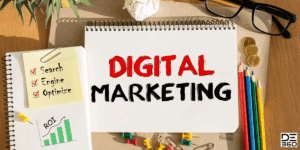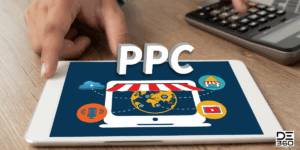In today’s digital landscape, two giants dominate the online advertising space: Google Ads and Facebook Ads. Both platforms offer immense potential, but they serve different purposes and audiences.
At Digital Edge 360, we often get asked: “Which one should I use for my business—Google Ads or Facebook Ads?”
The answer isn’t always one or the other. It depends on your goals, industry, audience, and budget.
Let’s break down the differences so you can make an informed decision.
🔍 Google Ads: Intent-Based Advertising
Google Ads helps you reach users who are actively searching for your product or service. Whether someone types “buy sneakers online” or “digital marketing agency near me,” your ad can appear at the top of the search results.
✅ Pros of Google Ads:
- High Intent Traffic: You’re targeting people ready to act or buy.
- Massive Reach: Google handles over 8.5 billion searches per day.
- Ad Formats: Includes Search, Display, YouTube, Shopping, and more.
- Measurable Results: Easy to track ROI through conversions and click data.
- Location Targeting: Perfect for local businesses and service providers.
⚠️ Cons:
- Competitive Bidding: High CPCs in certain industries (e.g., legal, insurance).
- Learning Curve: Requires solid keyword research and continuous optimization.
📱 Facebook Ads: Interest-Based Advertising
Facebook Ads (including Instagram) focus on targeting users based on interests, behaviors, demographics, and custom audiences. You’re not waiting for users to search—you’re putting your offer in front of them.
✅ Pros of Facebook Ads:
- Advanced Audience Targeting: Pinpoint your ideal customer by age, interests, location, and behavior.
- Visual & Creative Flexibility: Carousel ads, stories, video, reels, etc.
- Brand Awareness & Retargeting: Great for nurturing leads and building recognition.
- Lower CPC (in many industries): Especially in fashion, fitness, and education.
- Lookalike Audiences: Scale your campaigns using existing data.
⚠️ Cons:
- Lower Purchase Intent: You’re interrupting users while they scroll.
- Ad Fatigue: Creative needs to be refreshed often.
- iOS Privacy Updates: Has impacted tracking and conversions.
📊 Google Ads vs. Facebook Ads: Quick Comparison Table
| Feature | Google Ads | Facebook Ads |
|---|---|---|
| User Intent | High (search-driven) | Low–Medium (discovery-driven) |
| Audience Targeting | Keywords & location targeting | Demographics, interests, behaviors |
| Ad Formats | Text, Display, Video, Shopping | Images, Videos, Stories, Reels |
| Best For | Lead gen, search demand, services | Brand awareness, eCommerce, B2C |
| Conversion Speed | Often quicker (search intent) | Requires nurturing |
| Budget Flexibility | Can get expensive in competitive niches | Lower CPC in some industries |
| Learning Curve | Higher (keyword & bid strategy) | Easier to start and scale |
🧠 Which One Should You Choose?
💼 Choose Google Ads If:
- You want to capture high-intent leads searching for your services
- You run a service-based business (e.g., lawyers, consultants, home services)
- You’re targeting urgent needs (e.g., “AC repair near me”)
🛍️ Choose Facebook Ads If:
- You’re launching a new product or promoting an eCommerce brand
- You want to build brand awareness or run remarketing campaigns
- You’re targeting niche interests and behaviors
🔄 Why Not Both?
Many successful brands use a combination of Google and Facebook Ads.
- Google captures active demand
- Facebook creates new demand and nurtures leads
At Digital Edge 360, we specialize in creating integrated ad funnels using both platforms to maximize reach, conversions, and ROI.
✅ Final Thoughts: Let the Goal Define the Platform
Choosing between Google Ads and Facebook Ads isn’t about picking a winner. It’s about choosing the right tool for the right job. Your business goals, audience behavior, and budget should drive your decision.
Whether you’re just starting with paid ads or looking to optimize existing campaigns, our team at Digital Edge 360 is here to help.





